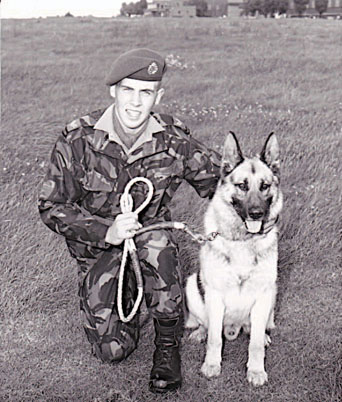Author: Jim Seaman
ISBN No: 978-1-4842-6908-4 (ebook)
Review date: 26/04/2024
No of pages: 743
Publisher: Springer Link
Publisher URL:
https://link.springer.com/book/10.1007/978-1-4842-6908-4
Year of publication: 14/04/2021
Brief:
This is a big book, and partly because the author covers the gamut of security, physical and cyber. It’s actually two books inside one, and as with so many things in life, it will be a matter of the readers’ opinion whether they like that or not.
Again, as with so many things in life, there are pros and cons. For: it’s Jim Seaman’s story and his ideas about how to do protective security, and he can express them as he feels best. Besides, by referring to his 22 years in the RAF Police before he moved into corporate security, he can illustrate his theory (under the BRIDGES acronym, ‘protecting those assets that are considered to be most valuable’, as he puts it towards the very end of his book). In any case, like so many who served years in the military, he has a fund of experiences, whether interesting, funny or extreme and extraordinary, to relate. Like so many of his era – he joined the RAF as a dog handler (pictured) as a teenager, in the summer of 1989 – he did the proverbial ‘see the world’ (not the ‘join the Army’ bit – he was put off on a day’s experience at Strensall barracks outside York, when an instructor trod deliberately on his hand when he was down in the mud on the assault course).
In passing, that does give food for thought about the perennial topic of recruitment (and, as important, retention). The military, and police and private security, are fishing for recruits from the same pool – and young people have many options. Did the instructor really have to treat a potential recruit like that?!
But to return to Jim’s book: a long appendix in the book is about his service – in the UK, the Falklands, Northern Ireland; and then in the UK’s overseas wars of the 2000s, in Basra and Camp Bastion among other places. Of particular interest and evidence of how well the military can ‘do’ security is his story of being tasked with securing flights of Afghan pilgrims from Kabul to Mecca in 2002 – that is, months after the 9-11 suicide hijackings made the world jittery about terrorism in general and aviation security in particular.
Jim remarks as many others who have left the military for a second career in ‘civvy street’, that it’s hard or outright impossible to get businesses to give credit for what military leavers have and can offer, whether in terms of doing security or as employees in general. As Jim describes his years in the RAF, it’s striking how he was able – having been taken on as a school-leaver – both to develop himself as a man and to get training in the most diverse fields, from counter intelligence and close protection to computer security (as it was called in those days). Besides the basics such as first aid. As another aside, as the UK military keeps getting whittled down in numbers, you have to wonder if it will keep being able to maintain all its specialisms – and what that will mean for UK private security and other industry sectors that – in an unacknowledged way – benefits from military leavers, often ready trained, or well trained, or trained in ways that just need adapting to civilian industry.
More to the point, as Jim says, what he and military people generally learn is ‘something that is extremely difficult to convey across to prospective employers in a two-page resume/curriculum vitae (CV)’. As an aside, the same goes for the police, and how to map competence and qualifications against jobs is a big task, for any field of work – last year the UK government security profession document was a considerable achievement and one to emulate.
There is an onus on the individual to transfer skills, and to show it – as Jim has done, gaining a distance learning MSc in security management from Loughborough; and among his qualifications on the cyber side, the ISACA Certified Information Security Manager (CISM); and he’s a PCI-DSS assessor.
Having said that there’s two books in one, in fact there are many – for the author covers so much ground; chapters on compliance, strategy, cyber security for the ‘digital business’, information systems, physical security, the securing of industrial processes, the supply chain, and resilience. While he is not the only author to give equal notice to protecting the real and online worlds, it is still far from common for security people to have such an all-round grasp, of the need for the ‘human firewall’ besides physical gates and bollards.
To sum up then, besides a detailed mapping out of how to do protective security, the book amounts to a case for military leavers such as the author to be given credit for what they know and how they can apply it (last year Jim brought out a book on the payment card industry security standard PCI-DSS). Besides the shift work of access control and patrols, it’s about switching from routine to a high tempo without notice; about being practical and able to use equipment; working in extremes of temperature and whatever the weather; and having a sense of humour. Why would you not want to draw on such people?
Other military leavers – and police too – will find Jim’s words a welcome restatement, while non-military readers can see where Jim is coming from, and learn.









